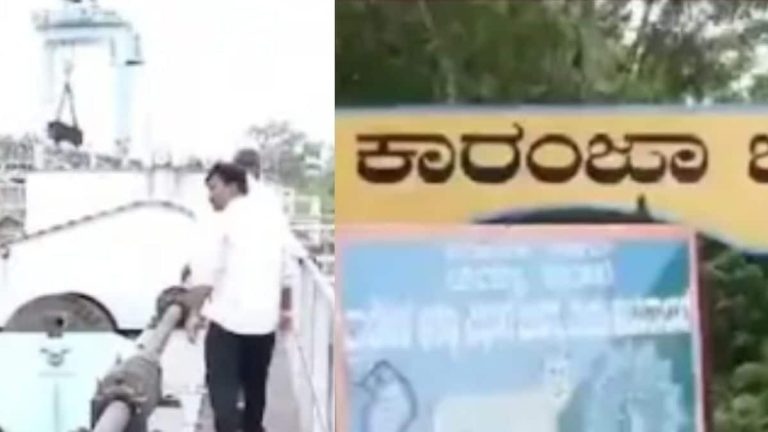Last updated:

Karanja Reservoir covers an area of approximately 27,000 hectares.
The dam has a capacity of approximately 769,000 million cubic feet (TMC).
Heavy rainfall across Karnataka caused rivers, ponds and reservoirs to overflow. Nonetheless, in the Bedar region of the state, lack of rainfall has resulted in the Karanja reservoir being less than half full. There is a significant difference in reservoir water levels compared to the previous year. This has also led to a shortage of drinking water for residents in the area. Bidar district has received insufficient rainfall this year compared to other parts of Karnataka. This reduces the flow of water from Karanja Reservoir, an important source of water for residents. Now, people in the area worry about drinking water supplies and irrigation of their fields in the near future.
Karanja Reservoir covers an area of approximately 27,000 hectares and has a water storage capacity of approximately 76.9 billion cubic feet (TMC). Although the state has had good monsoon in the past two months, rainfall has remained deficient in Bidar district. The expected water inflow at the Kotur barrage in Telangana is also yet to arrive.
Bidar, Humnabad, Chitguppa and Bhalki districts also did not receive adequate rainfall as expected. Even the water from rivers and streams did not reach the dam. This year, the inflow into the reservoir was only 310 cusecs and only 3.99 TMC was collected. Now, the reservoir is in danger of drying up.
The Karanja reservoir is currently drying up and the water level needs to rise 7 feet to reach full capacity. Last year, the inflow into the reservoir was 5,000 cubic seconds and the outflow was 3,000 cubic seconds. This time last year, the dam had collected 67 TMC of water. Locals fear that two months of monsoon has passed and there could be a severe shortage of drinking water in the short term if the reservoirs are not filled.
